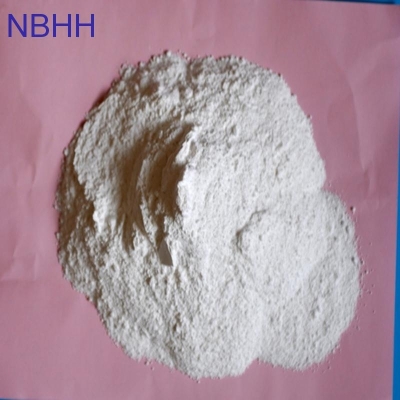-
Categories
-
Pharmaceutical Intermediates
-
Active Pharmaceutical Ingredients
-
Food Additives
- Industrial Coatings
- Agrochemicals
- Dyes and Pigments
- Surfactant
- Flavors and Fragrances
- Chemical Reagents
- Catalyst and Auxiliary
- Natural Products
- Inorganic Chemistry
-
Organic Chemistry
-
Biochemical Engineering
- Analytical Chemistry
-
Cosmetic Ingredient
- Water Treatment Chemical
-
Pharmaceutical Intermediates
Promotion
ECHEMI Mall
Wholesale
Weekly Price
Exhibition
News
-
Trade Service
Maize dwarf mosaic virus (MDMV) is one of the pathogens that cause corn dwarf mosaic disease, which seriously harms a variety of grasses
such as corn, sorghum and sugarcane.
Maize virus sorghum sugarcanesuch as corn, sorghum and sugarcane.
1.
World distribution
1.World distribution
World distribution
MDMV occurs in the world's major maize and sorghum growing areas, distributed in: the United States, Argentina, Brazil, Peru, Venezuela, Morocco, China and other countries
.
.
2.
Host plants
2.Host plants
Host plants
The source of MDMV in the field is mainly some disease-susceptible plants, but also from diseased corn seeds
.
The host plant of MDMV natural origin has many species of grasses, the most important of which is Johnson grass and a sorghum (Sorghum verticiliflorum
).
.
The host plant of MDMV natural origin has many species of grasses, the most important of which is Johnson grass and a sorghum (Sorghum verticiliflorum
).
3.
Transmission route
3.Transmission route
Transmission route
1.
MDMV is mainly transmitted in a non-lasting way by corn aphid, wheat dipter aphid, cotton aphid, peach aphid, etc.
, and the source of the virus is spread
by aphids sucking leaf juice.
MDMV is mainly transmitted in a non-lasting way by corn aphid, wheat dipter aphid, cotton aphid, peach aphid, etc.
, and the source of the virus is spread
by aphids sucking leaf juice.
2.
Seed transmission, the long-distance spread of the virus is completed
through the international seed trade.
Seed transmission, the long-distance spread of the virus is completed
through the international seed trade.
4.
Symptoms of infection
4. Symptoms of infection
Symptoms of infection
After maize is infected with maize dwarf mosaic disease virus, the typical symptom is the first round faded green spots
between the veins at the base of the heart leaf of the seedling.
As the plant grows, the faded green spots gradually expand to the whole leaf, showing a typical flower-leaf shape
.
In some varieties, the leaves show the yellowing of the inter-veined leaf flesh and the leaves are striped
.
The earlier the disease-inducing period, the more pronounced the dwarfing of the plant, the inability to draw males and bear fruit, and the premature aging and death
of the plant.
between the veins at the base of the heart leaf of the seedling.
As the plant grows, the faded green spots gradually expand to the whole leaf, showing a typical flower-leaf shape
.
In some varieties, the leaves show the yellowing of the inter-veined leaf flesh and the leaves are striped
.
The earlier the disease-inducing period, the more pronounced the dwarfing of the plant, the inability to draw males and bear fruit, and the premature aging and death
of the plant.
5.
Hazard situation
5. Hazard situation
Hazard situation
MDMV can cause plants to fade, dwarf, sterile, premature death and other symptoms, resulting in economic losses
of corn and sorghum.
of corn and sorghum.
In 1963, corn dwarf mosaic disease was first reported in the United States in Ohio, and soon spread to 37 states, becoming one
of the most widely distributed and harmful corn diseases in the United States.
of the most widely distributed and harmful corn diseases in the United States.
In the late 1860s, corn dwarf mosaic disease occurred for the first time on a large scale in parts of Henan Province, henan province alone, and Hui County in Henan Province alone lost 25 million kilograms of grain, accounting for 33.
53%
of the total output of the county.
53%
of the total output of the county.
Corn is one of the staple foods in China, and the risk of corn seeds carrying quarantine pests cannot be ignored
.
In 2021, joint announcement No.
413 of the Ministry of Agriculture and Rural Affairs and the General Administration of Customs came into effect, and maize dwarf mosaic virus was included in the Directory of Quarantine Pests of Imported Plants of the People's Republic of
China.
Quarantine of imported plants of the General Customs Administration of Pests.
In 2021, joint announcement No.
413 of the Ministry of Agriculture and Rural Affairs and the General Administration of Customs came into effect, and maize dwarf mosaic virus was included in the Directory of Quarantine Pests of Imported Plants of the People's Republic of
China.
1.
In the phytosanitary protocol on the import of corn imported to China signed with Kazakhstan, Serbia, Uruguay and other countries, China has included the corn dwarf mosaic virus in the list of pests of concern as a quarantine pest management
.
In the phytosanitary protocol on the import of corn imported to China signed with Kazakhstan, Serbia, Uruguay and other countries, China has included the corn dwarf mosaic virus in the list of pests of concern as a quarantine pest management
.
2.
Carry out inspection and quarantine of imported corn and sorghum, especially for pests of concern for the protocol and quarantine
examination and approval.
Carry out inspection and quarantine of imported corn and sorghum, especially for pests of concern for the protocol and quarantine
examination and approval.
3.
As an important wintering host of MDMV, Johnson grass is also a quarantine weed in China, and should also pay attention to the monitoring
of foreign epidemics such as weeds during port quarantine.
As an important wintering host of MDMV, Johnson grass is also a quarantine weed in China, and should also pay attention to the monitoring
of foreign epidemics such as weeds during port quarantine.
Contributed by: Qingdao Customs
Contributed by: Qingdao Customs 






